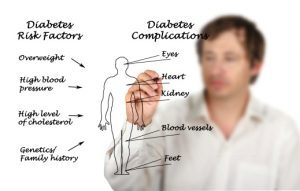
One-third of healthy weight individuals over the age of 45 have prediabetes, according to the research findings.
Lead author Arch Mainous said, “Being at a healthy weight may not necessarily be healthy. We have some strong data that says we need to rethink our model of what we think is healthy. This may require a paradigm shift so that we’re not just looking for diabetes in the overweight and obese.”
In prediabetes, blood sugar levels are elevated, but not enough to be considered type 2 diabetes. If prediabetes is not managed, it can very well progress into type 2 diabetes.
Type 2 diabetes screening usually occurs in those over the age of 45. Overweight or obese individuals are screened at earlier ages. Focusing on screening in this risk group may result in overlooking the risk of type 2 diabetes in normal weight individuals with prediabetes.
Mainous suggests that an increase in a sedentary lifestyle could help explain the rise in health problems in seemingly healthy individuals.
Body mass index (BMI) is usually used to determine if someone is unhealthy or not, but many doctors and researchers are pointing out that it is an imperfect indicator. BMI is calculated based on one’s height and weight. Dr. Joel Zonszein, director of the clinical diabetes program at Montefiore Medical Center, added, “BMI is a very crude way to look at obesity. BMI doesn’t correlate well with bad obesity [the type that collects around the abdomen]. Not everybody who is obese will get diabetes, and not everybody who has diabetes is obese. I always recommend that people stop drinking soda and juices and stop eating fast food.”
Zonszein recommends that type 2 diabetes screening be based on the specific risk factors for diabetes in a patient. “A healthy diet and regular exercise are givens. But you need to look at the person, their risk factors and lifestyle to decide how to treat them,” he added.
Mainous concluded, “I want to re-emphasize that diabetes prevention needs to include people at the highest risk who have the most to benefit from intervening, but now we know we have a group that is being missed. So, do we need to rethink the guidelines?”